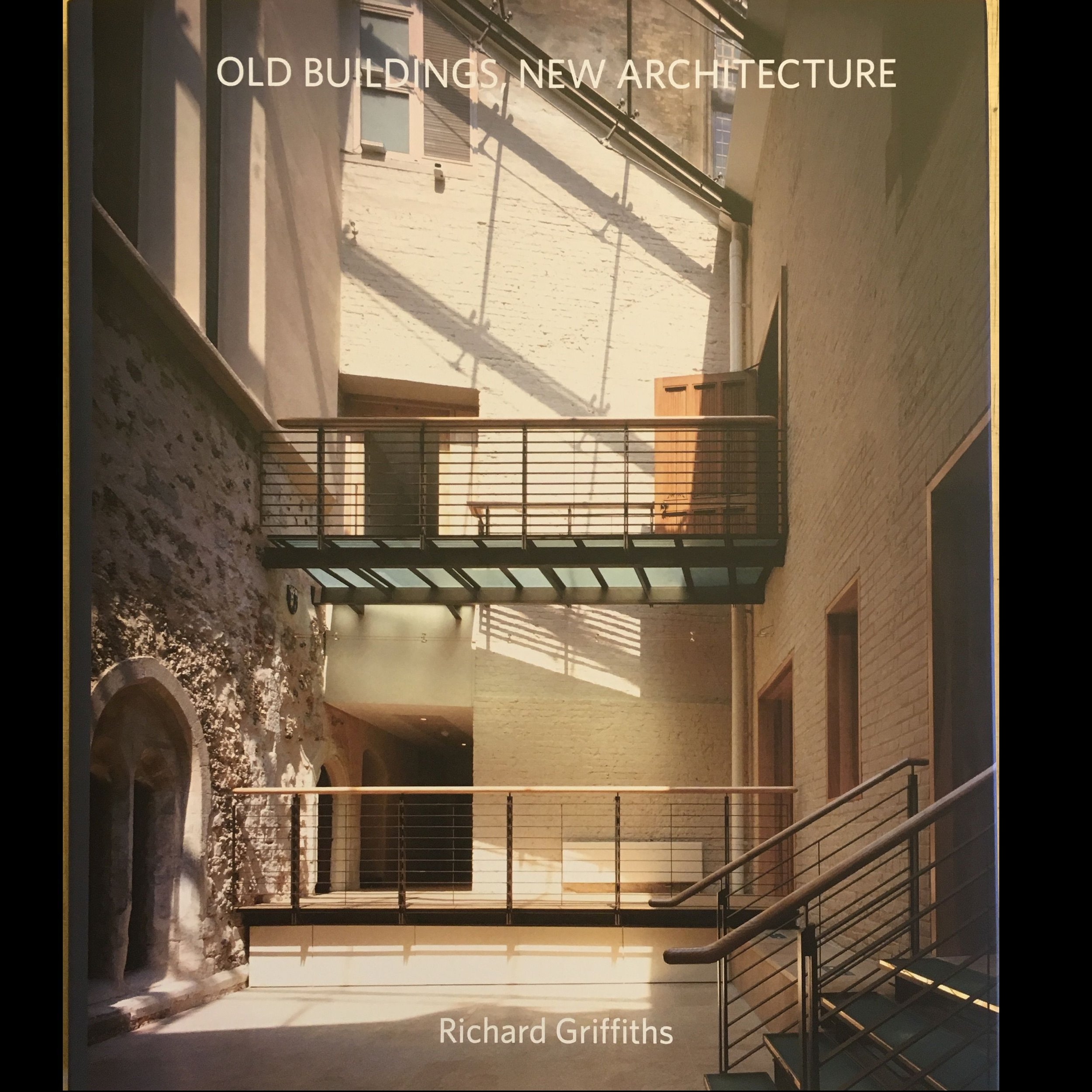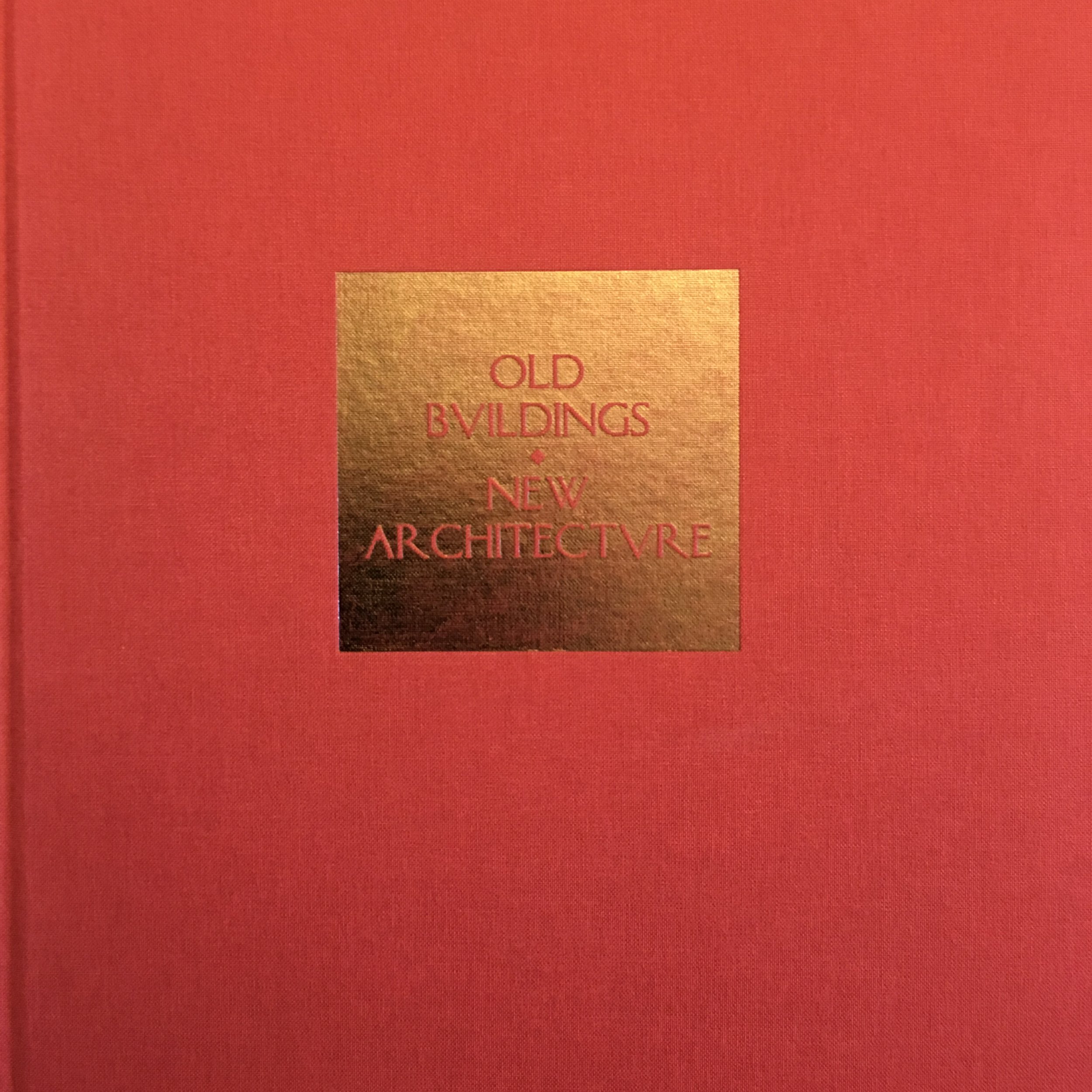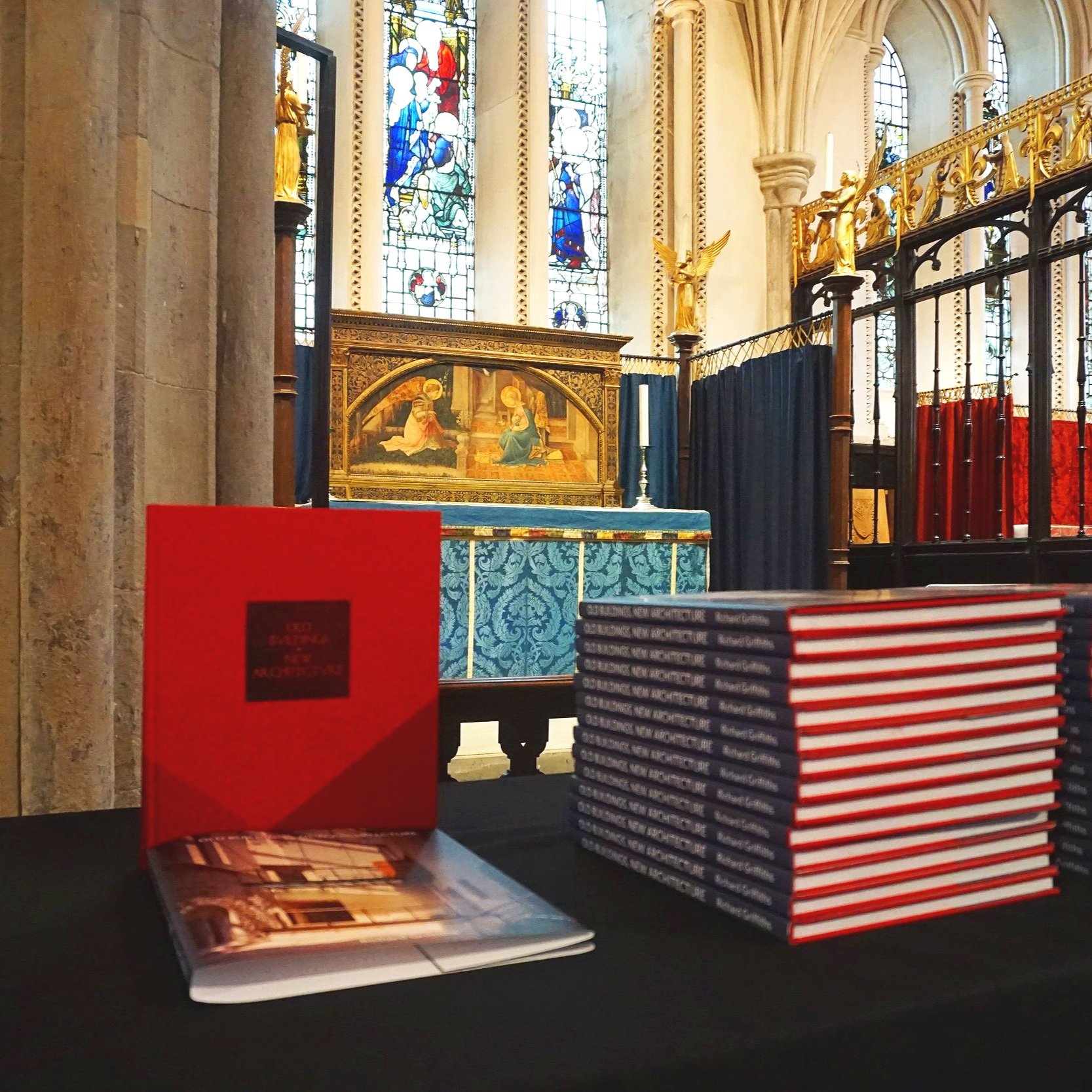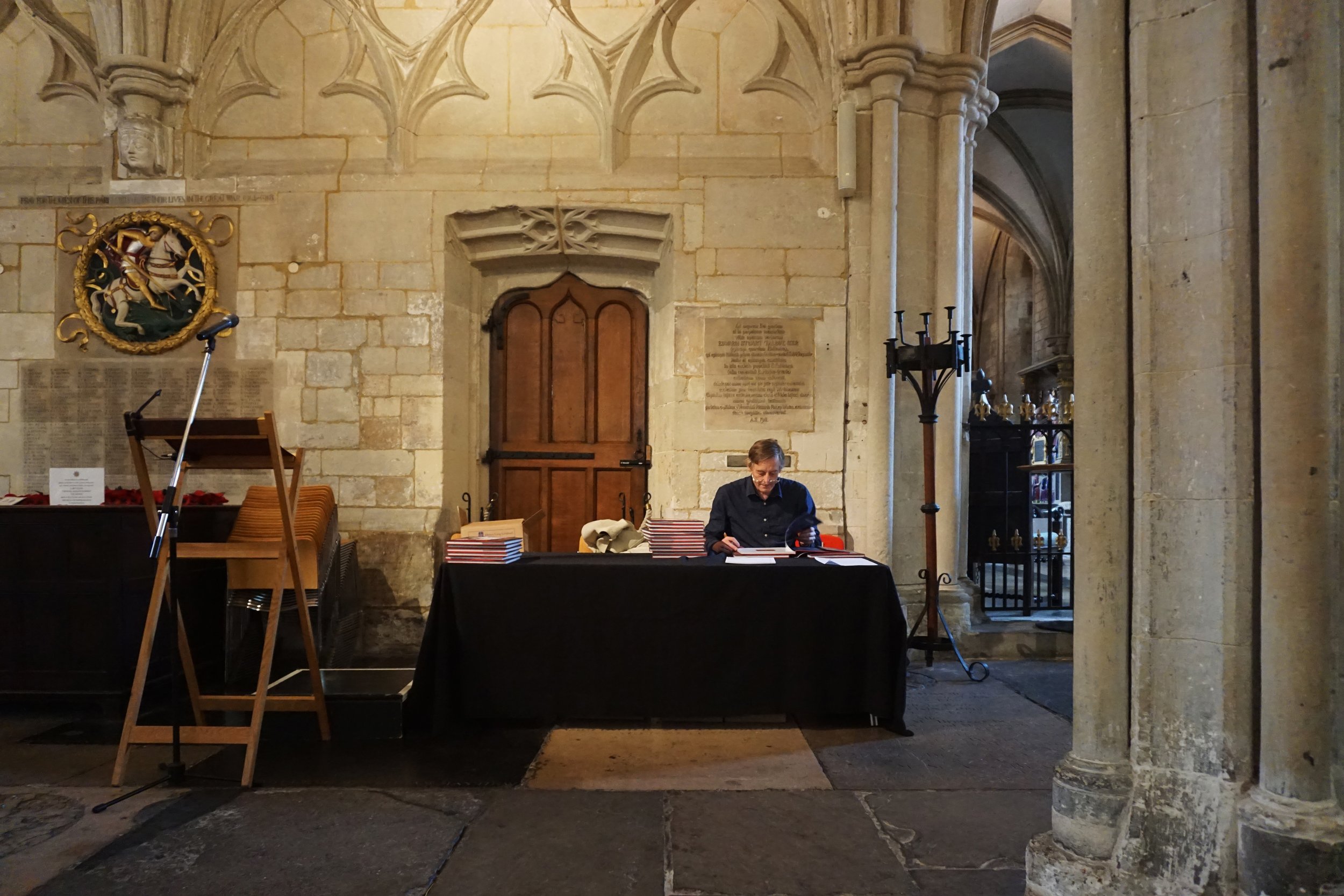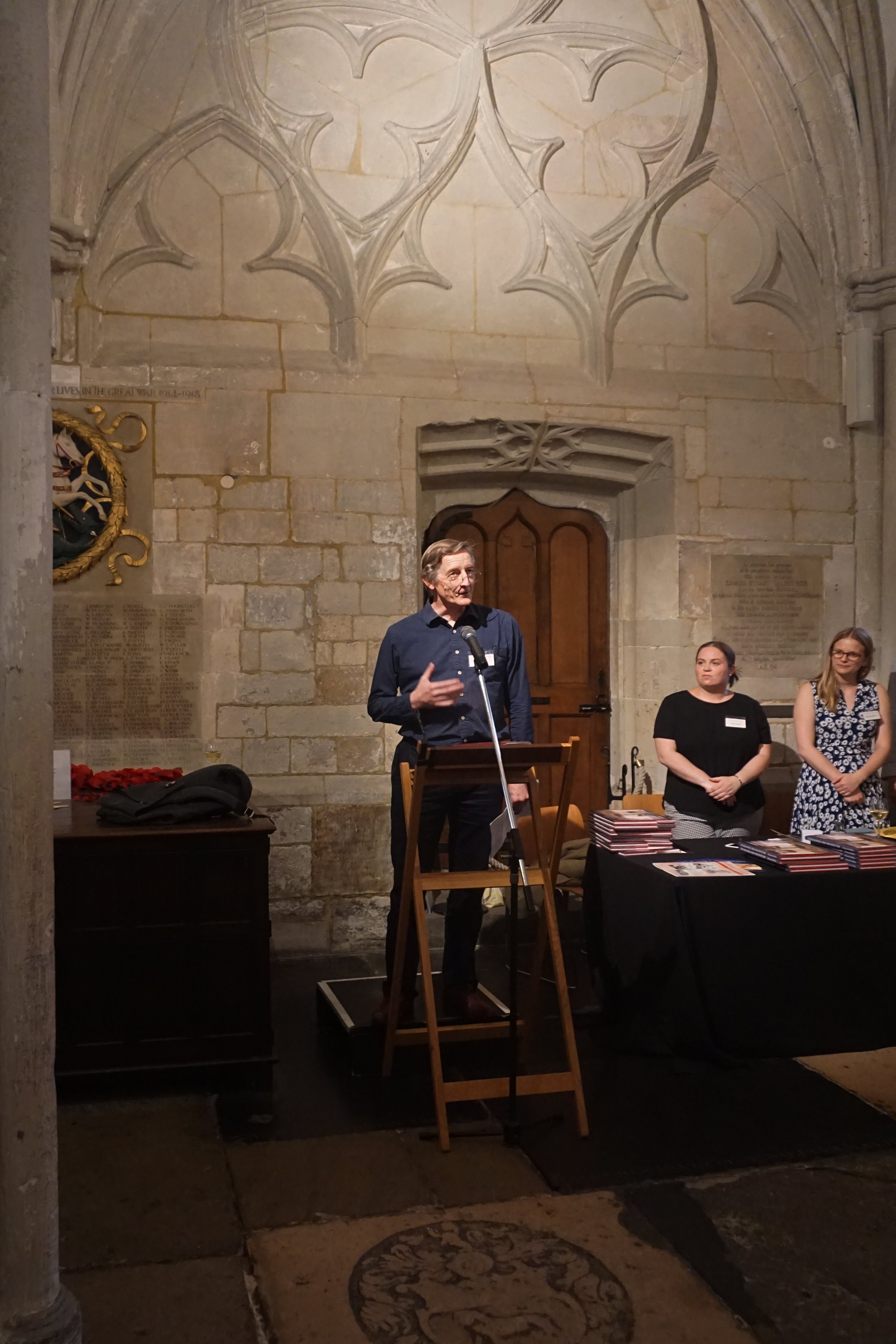Old Buildings, New Architecture
by Richard Griffiths
“The beauty of this book is that it describes the approaches to a varied selection of buildings repaired and repurposed on the basis of careful aesthetic and philosophical thought but never dogma.”
In this book, Richard Griffiths describes the creation of new architecture for old buildings, through the story of his practice, Richard Griffiths Architects, and of the projects that he has completed over 25 years. He writes of his belief that adding a new layer of architecture and use to old buildings is as interesting and rewarding as designing new buildings, since old buildings have a richness of memory, significance and texture that new buildings can only acquire over time. The book is richly illustrated with colour photographs.
-
The book covers the following topics:
• The making of an architect
• The layering of history: Sutton House
• Old and new in context: Southwark Cathedral
• Old and new in contrast: Lambeth Palace and Burghley
• Historic houses for the public
• The care of churches
• The care of cathedrals: St Albans Abbey
• New design in an historic context
• The typology of barns
• The art of repair and the texture of age
• The art of construction and detailing
• Architecture and decoration
• New uses for old buildings
• The case for restoration
• Historic gardens and landscape
• The regeneration of historic areas
• Conservation cause célèbre: St Pancras Hotel and Station
-
A handbook for combining new and old: I have enjoyed reading Richard Griffiths’ book Old Buildings, New Architecture. He is a thoughtful architect who dislikes the idea that ‘conservation architects’ are technical specialists who can only deal with restoration. In his case, a huge range of work which involves additions (both connected and stand-alone) is a confirmation of his proposition that it is a holistic architectural attitude which is critical, not simply an ability to repurpose the old based on purely functional requirements. This is a history of 25 years of work, beautifully illustrated, which will appeal to any thoughtful architect.
Paul Finch, Architects’ Journal
The beauty of this book is that it describes the approaches to a varied selection of buildings repaired and repurposed on the basis of careful aesthetic and philosophical thought but never dogma. With its short accessible texts on many cases the book is an absorbing and stimulating introduction to the many decisions an architect must take about fabric, materials, finishes and colour and the larger questions of aesthetics, structure and space.
Marcus Binney, SAVE Newsletter
This monograph is about the stimulating environment of history, memory and the graceful process of ageing, about the art of adding a new layer to old buildings. It sums up the life experience of a designer who would not be pigeonholed in the role of conservation architect. The thematic structure allows readers to use the book as an encyclopaedia as well as a course on contextual design. It will be of equal interest to professionals and those who would like a taster of both heritage and design.
Michael Asselmeyer, IHBC Context magazine
I had not begun to appreciate the extent of your work, not least on buildings I know well and have come to admire. I can only describe you as a saint of the built environment.
Simon Jenkins, SAVE and Guardian columnist
Your distinguished book brings back many happy memories of the restoration of Sutton House in Hackney. All told, congratulations on your work.
Lord Rothschild, founding chair of the National Lottery Heritage Fund
I am loving, enjoying and profiting from your book. I can see - if I did not know it already - that you are a past master of adding new layers of architecture while at the same time liberating or revealing historic layers in buildings of all scales and periods. We cannot all sit at the feet of a consummate master; but in this case we can at least read his book.
Peter Burman, SPAB Magazine
Wow; what a body of work! My seven year old daughter is so impressed she was trying to smuggle the book up to her room !
Aidan Ridyard, Burrell Foley Fischer
It was a thrill to receive your letter and the very attractive and skillfully produced book which it enclosed. I remember you very well and am glad to see that your undoubted talents are now manifest in this publication.
Trevor Osborn, Developer of Oxford Castle and Buxton Crescent
-

